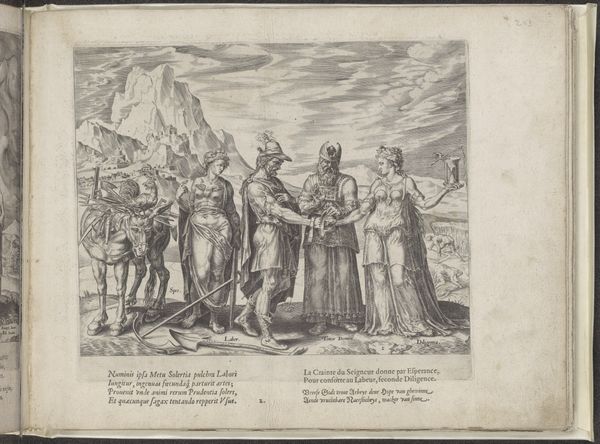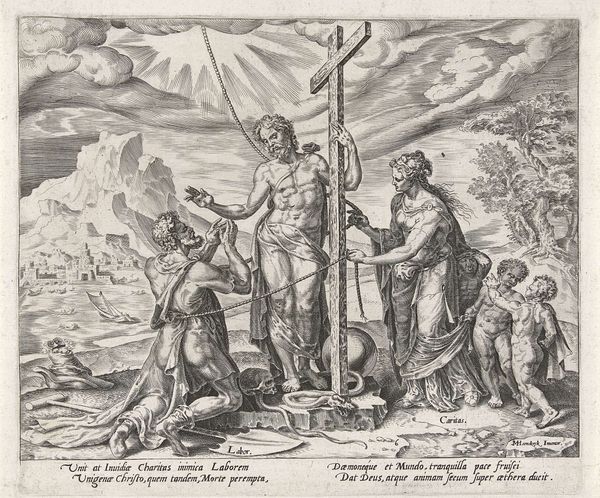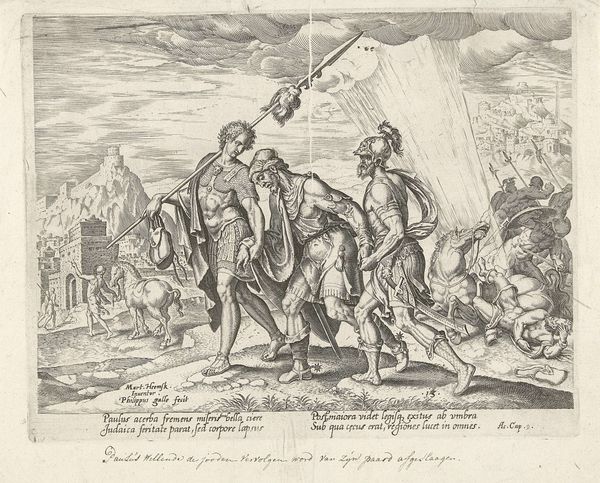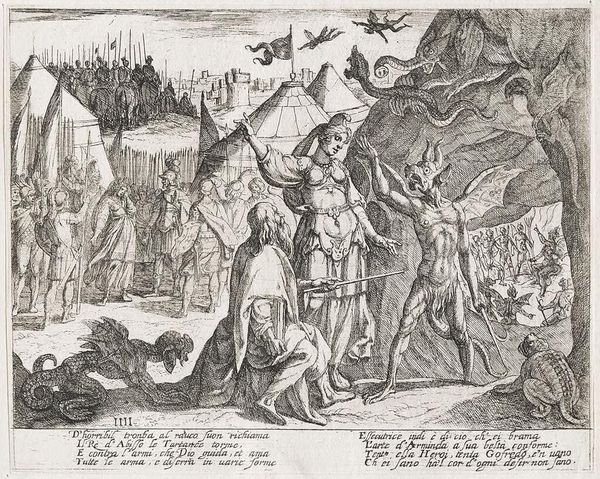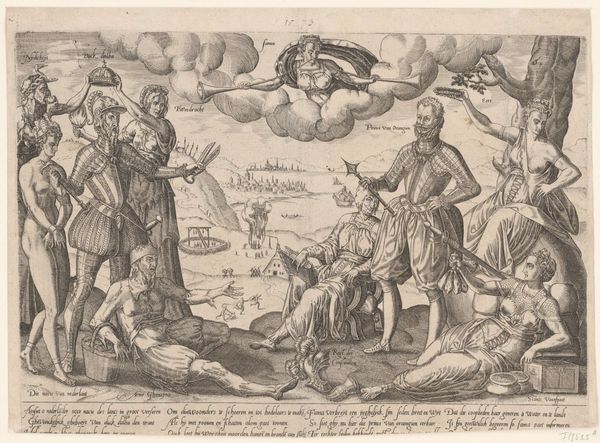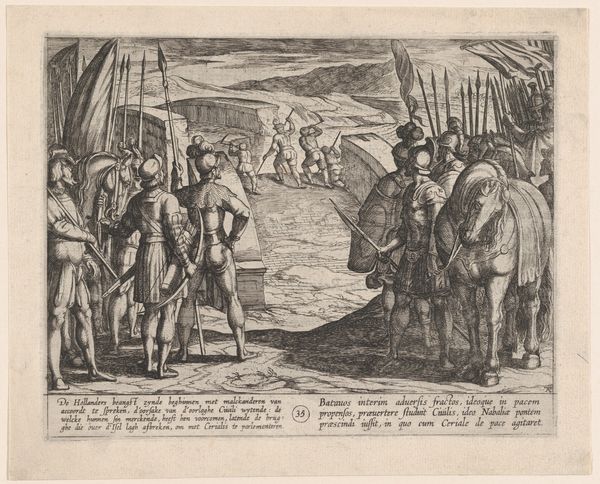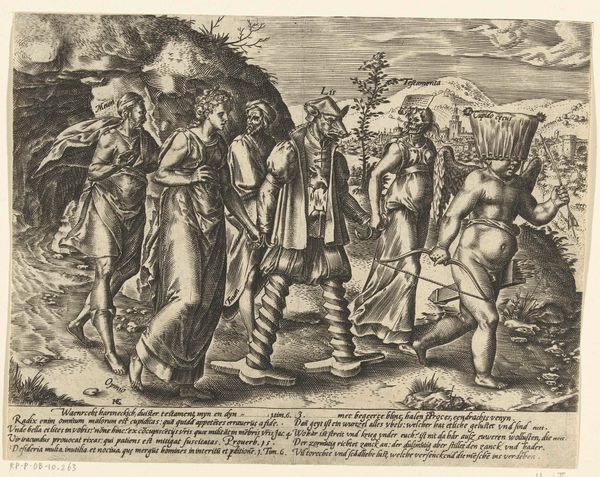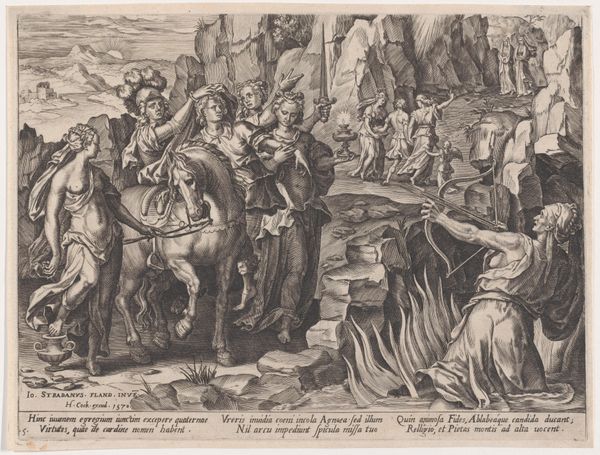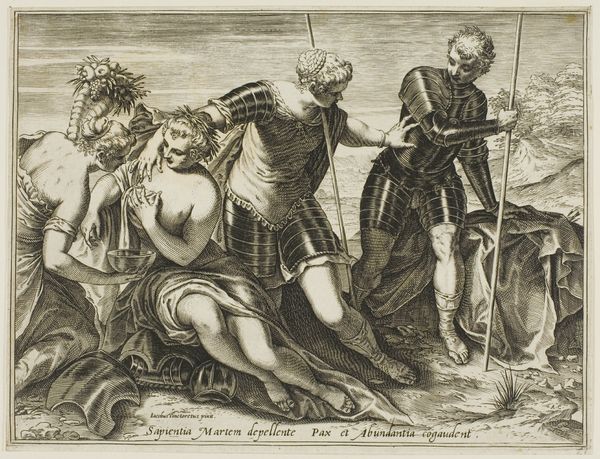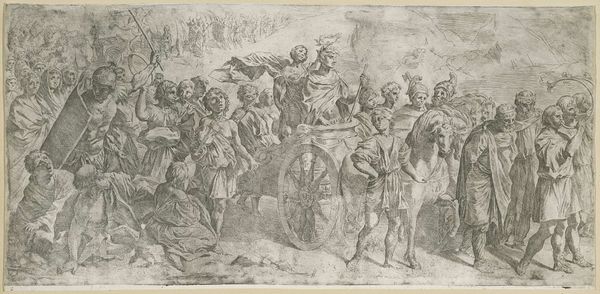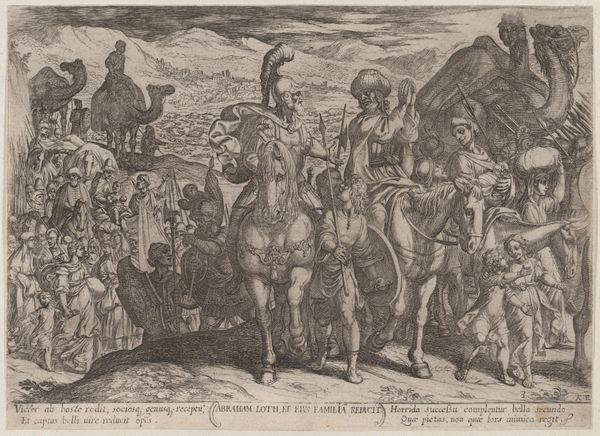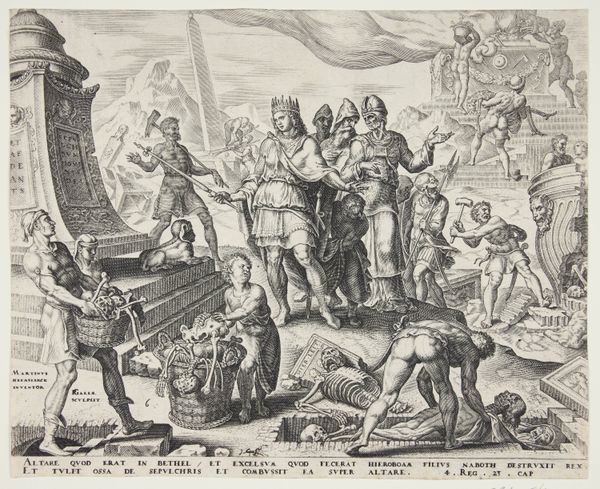
engraving
#
baroque
#
dutch-golden-age
#
landscape
#
figuration
#
history-painting
#
engraving
Dimensions: height 210 mm, width 247 mm
Copyright: Rijks Museum: Open Domain
This engraving, *Huwelijk tussen Arbeid en Vlijt,* was created by Philips Galle in the late 16th century. The stark contrast between the dark lines and the light background immediately catches the eye, creating a dramatic effect. The composition is structured around a central group of four figures set against a distant landscape. The figures are arranged symmetrically, with the two central characters, Labor and Timor Domini, joining hands. On either side, we see the figure of an ass with tools balanced by Diligentia. This symmetry, however, is disrupted by the diagonal lines of the landscape, creating a dynamic tension. Galle uses line and texture to differentiate the characters, emphasizing the muscularity of Labor and the ornate robes of Timor Domini. These sartorial differences can be understood as signs which give meaning to the figures. The overall effect is to elevate labor and diligence to a religious level, reinforcing contemporary ideas that persistent work leads to knowledge. The marriage of labor and diligence suggests a union that generates wisdom. Galle's use of line and form invites us to think about how work and faith are intertwined, reflecting cultural values that privilege knowledge gained through industriousness.
Comments
No comments
Be the first to comment and join the conversation on the ultimate creative platform.
